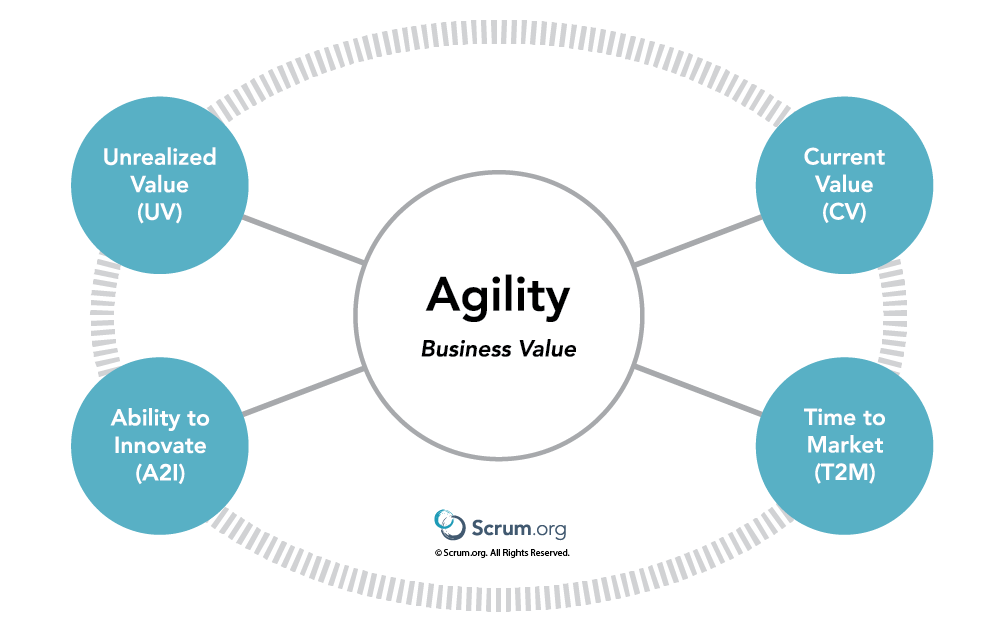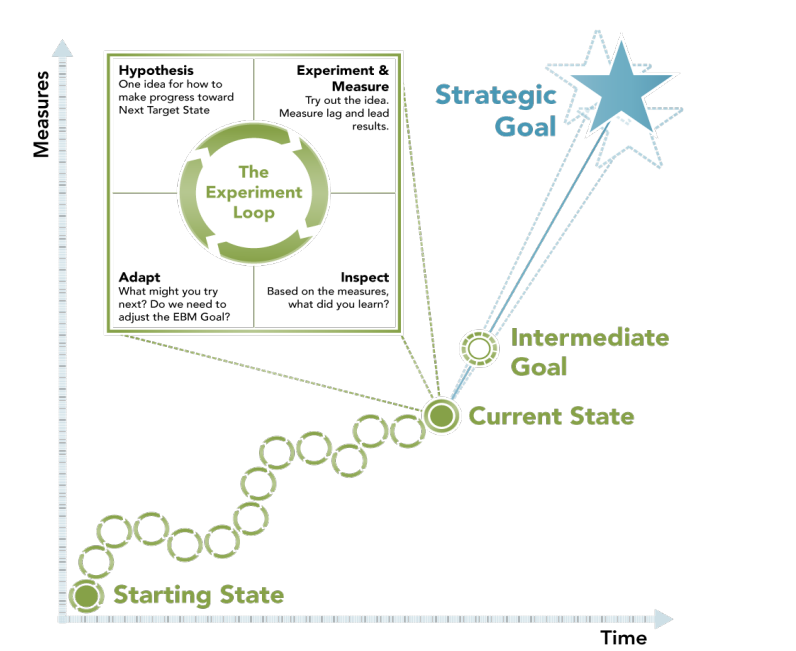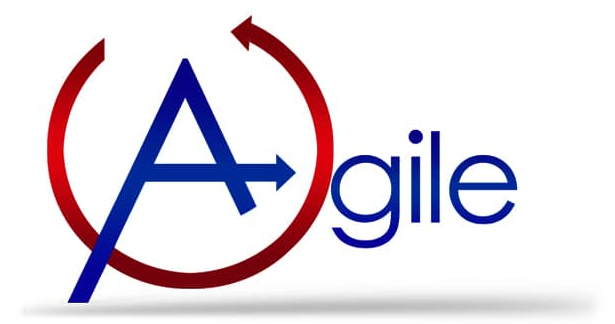Agile Management with an Evidence Based Guide
For any organization, the concern for performance is vital and requires that leaders be able to: set key indicators that will allow effective evaluation, act to achieve objectives, measure results in order to have material to steer organization effectively. The execution of these 4 groups of activities is all the more crucial for the sustainability of organizations, when they evolve in a complex context characterized by:
- High uncertainties or high unpredictability. Cynefin model
- Growing competition or a changing industry (innovation, mores)
What is the agile method?
Agile is a management approach that aims to increase the value and adaptability of organizations. It is based on 4 values and 12 principles, all driven by 3 fundamental pillars: Transparency, Inspection and Adaptation. https://agile.cm/manifeste-agile
These 3 pillars led our partner Scrum.org to create an inspection and management tool that we use today in consultation and training. This is Evidence-Based Management (EBM).

Our expertise has led us to observe that the majority of organizations define KPIs: key performance indicators or OKRs: Objective Key Results, which for the most part focus on their market value: the tip of the iceberg.
What is management by evidence?
The 1st advantage of evidence-based management is that it offers a more transparent view of the real value of your company: the emerged and submerged sides of your performance.
- Market value: a) present value: with indicators such as profit; employee satisfaction; that of users; b) Unrealized value: by measuring the satisfaction gap, the experience your customers want versus the experience they feel they receive from your products and services today.
- Organizational Capability Value: c) Time to Market: the time it takes you to go from a customer need to handing over a functional and usable version to the customer; the time it takes you to correct the difficulties encountered by your teams; d) your ability to innovate: the percentage of effort you devote to innovation compared to all the efforts of your company; the evolution of your technical debt. More indicators on https://agile.cm/ebm
“The captain who sees a mass on the surface of the sea, reacts differently from the captain who sees an entire iceberg: both on the surface of the sea and in the sea. (Cf. Titanic). The mate is then able to make better decisions to save his ship.“
By using these 4 value areas as a compass, you will be able to visualize and inspect the reality of your organization’s performance.
If you don’t create enough transparency, you won’t see the whole iceberg. Your Inspection will be limited or distorted. And your adaptation will be inadequate, poorly calibrated to the extent of your needs. Putting you at risk of disruption or bankruptcy in the more or less short future. Read more about our case study of BMW’s performance in China Management_par_l évidence_JNM_2024_-_Romuald_Franck_AGILE_THINKING_original
The 2nd advantage of management by evidence is that it offers a solution to navigate uncertainty or a complex problem.
It is a fabulous adaptation tool that allows you to define intermediate objectives towards the achievement of your strategic vision; adapt your indicators according to your state over time; create and carry out experiments; and ultimately inspect and adjust over time.

With this iterative and flexible approach, our local https://agile.cm experts help you build a performance improvement loop that:
- Reduces your exposure to risk through the “inculturation“ of experimentation and
- Improves your competitiveness by boosting your performance.



Leave a Reply
You must be logged in to post a comment.